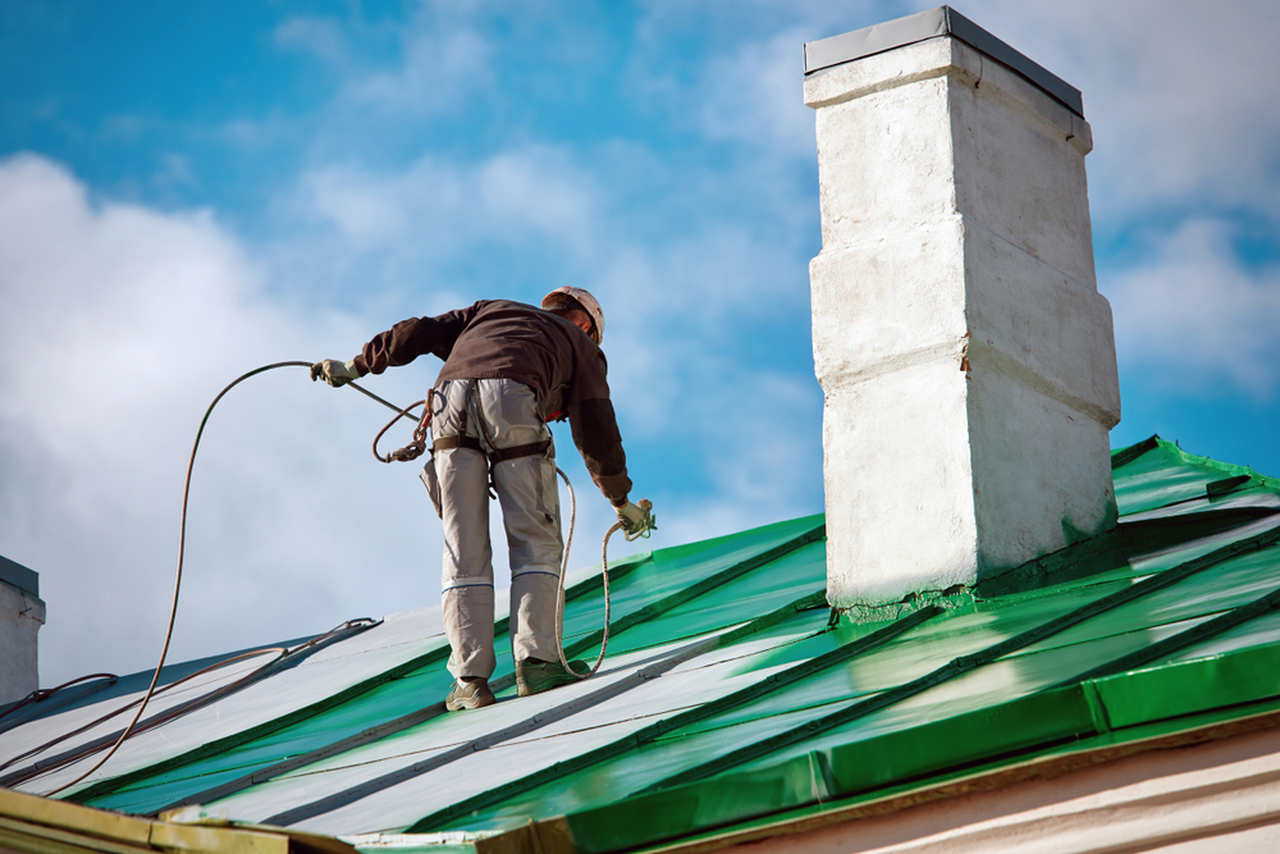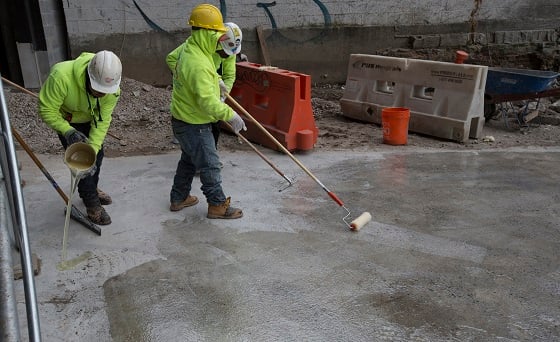How Waterproofing Works: A Detailed Appearance at Techniques and Technologies
Waterproofing is essential for protecting structures from moisture-related damages. It entails different strategies and technologies that develop obstacles versus water intrusion. Typical methods, such as compacted clay, coexist with contemporary advancements like liquid-applied membrane layers. Understanding the nuances of these techniques is essential for efficient application. However, the efficiency of any type of waterproofing remedy hinges not just on the techniques made use of but also on recurring maintenance and assessment. What are the crucial variables that affect long-term efficiency?
Comprehending the Essentials of Waterproofing
Waterproofing is a necessary process that protects frameworks from water intrusion, which can result in considerable damage with time. This method includes the application of different materials and strategies designed to create a barrier against moisture. The key goal is to avoid water from permeating surfaces, which can create wear and tear, mold growth, and structural instability.Various elements affect the selection of waterproofing technique, consisting of the kind of framework, its area, and ecological problems. Understanding the physics of water movement and the buildings of various materials is essential in choosing an efficient waterproofing solution.Effective waterproofing not only safeguards structures however also enhances their long life and honesty. Commonly, it is incorporated right into the design phase of building to guarantee complete protection. As awareness of water-related problems grows, the importance of comprehending waterproofing principles comes to be increasingly clear to engineers, builders, and building owners alike.
Typical Waterproofing Methods
Traditional waterproofing techniques have actually been made use of for centuries, relying upon reliable methods and products to guard structures from water damage. Among the earliest methods involves the usage of clay, which, when compressed, develops an all-natural barrier against moisture. In addition, asphalt, a sticky, black product originated from petroleum, has been employed for its waterproof properties, often used to roofing systems and foundations.Another technique includes the application of lime-based plasters, which give a breathable layer that enables dampness to leave while stopping water ingress. Thatch roof, a typical method still seen in some cultures, offers outstanding waterproofing due to its snugly packed straw layers.Moreover, using rock and brick has actually projected, as these products are inherently resistant to water when correctly mounted. In general, standard waterproofing approaches highlight the importance of choosing ideal products and building techniques to enhance toughness against water intrusion.
Modern Waterproofing Technologies
Innovations in contemporary waterproofing modern technologies have reinvented the way structures are safeguarded from water damages. Innovative strategies such as liquid-applied membrane layers and advanced sealers have actually improved the effectiveness and flexibility of waterproofing options. These innovations enable for seamless application, decreasing the threat of leaks and making sure extensive insurance coverage over complicated surfaces.Moreover, the integration of smart modern technologies, such as wetness sensing units and automated surveillance systems, enables real-time analysis of waterproofing performance. This proactive technique promotes timely maintenance and lowers long-lasting repair service costs.Additionally, advancements in spray-applied coatings offer quick application and outstanding adhesion, adjusting to numerous substrates while supplying robust defense. Methods like polymer-modified systems additionally enhance adaptability and longevity, making them suitable for diverse environments. Overall, contemporary waterproofing modern technologies not just alleviate water breach yet also add to the long life and sustainability of frameworks, noting a significant change in the market.
Products Utilized in Waterproofing
The effectiveness of waterproofing solutions greatly depends on the materials made use of in their application. Various materials are used to produce barriers versus water access, each with unique buildings fit for various atmospheres. Commonly utilized products consist of membrane layers, coatings, and sealants.Liquid-applied membranes, typically made from polyurethane or acrylic, create a smooth obstacle that adapts to complex surfaces. Sheet membranes, normally created from rubber or polycarbonate, offer longevity and try this web-site are suitable for bigger areas. In addition, cementitious waterproofing products, made up of cementitious substances, give excellent adhesion and flexibility.Sealants made from silicone or polyurethane are necessary for joints and seams, making sure thorough defense. Furthermore, advanced materials, such as geo-composite membrane layers, integrate several functions, improving efficiency. Generally, the option of waterproofing products is crucial in attaining durable and efficient water resistance, customized to details job requirements and environmental problems.
Usual Applications of Waterproofing
Waterproofing plays a crucial duty in various fields, guaranteeing the durability and integrity of frameworks. Usual applications consist of residential options that shield homes, business framework that safeguards services, and industrial setups that need durable security against moisture. Recognizing these applications waterproofing block foundation highlights the value of waterproofing in preserving both safety and security and performance throughout different settings.
Residential Waterproofing Solutions
Many property owners encounter difficulties with dampness invasion, making effective domestic waterproofing options crucial. Various approaches exist to resolve this issue, including exterior and interior waterproofing systems. Interior options typically involve the application of sealants and layers to basement wall surfaces, which aid prevent water seepage. Outside approaches usually consist of the setup of water drainage systems and water-proof membranes that draw away water away from the foundation.Additionally, house owners may take into consideration sump pumps to get rid of water build-up and dehumidifiers to regulate moisture levels. Appropriate grading and making use of gutters likewise play a crucial duty in handling water flow around the home. By executing these approaches, house owners can significantly lower the threat of water damages and mold growth, making certain a dry and safe living setting.

Industrial Infrastructure Protection
Effective waterproofing options play a critical role in the defense of commercial framework. Water Solutions Omaha. These methods are vital for securing structures, vehicle parking frameworks, and bridges from water damage, which can endanger architectural integrity and result in pricey repair work. Usual applications consist of the installment of membranes, coverings, and sealers that produce barriers versus wetness infiltration. Locations such as cellars, roofing systems, and outside walls are typically prioritized to assure long life and resilience. In addition, waterproofing systems can enhance power performance by protecting against water-related concerns that may bring about mold and mildew growth and degeneration. By executing robust waterproofing measures, homeowner can protect their investments and maintain operational effectiveness, inevitably adding to the general sustainability of industrial centers
Industrial Applications Introduction
While various sectors face unique challenges, the demand for reputable waterproofing remedies stays a continuous in industrial applications. Industries such as manufacturing, building, and power usually encounter settings where moisture exposure can endanger structural stability and operational effectiveness. In making facilities, waterproofing is crucial for protecting equipment and materials from water damages. In building, it safeguards structures and basements versus groundwater infiltration. The energy industry depends on waterproofing for the defense of tools in hydroelectric plants and offshore structures. In addition, food processing sectors utilize waterproofing to assure health and compliance with safety criteria. In general, efficient waterproofing options are important for improving longevity, safety and security, and performance throughout numerous industrial settings.
Maintenance and Long Life of Waterproofing Solutions
Waterproofing solutions are made to supply long-term security against dampness invasion, routine upkeep is vital to ensure their performance and long life. Routine evaluations play a considerable function in determining possible concerns such as splits, peeling off, or signs of water damage. Attending to these troubles quickly can protect against additional deterioration and costly repairs.Additionally, cleansing the surface area of waterproof locations assists get rid of dirt and debris that can endanger the integrity of the waterproofing barrier. It's also advisable to reapply redirected here safety coverings or sealers as recommended by manufacturers to preserve ideal performance. Environmental elements, such as UV exposure and severe weather, can impact the lifespan of waterproofing materials, making regular assessment essential
Often Asked Questions
Can Waterproofing Be Applied in Cold Climate?
The inquiry of applying waterproofing in chilly climate raises worries about adhesion and treating. Numerous items might not do at their best in reduced temperatures, requiring cautious selection and consideration of details standards for reliable application.
The Length Of Time Does Waterproofing Commonly Last?
The period of waterproofing effectiveness varies based on materials and environmental factors. Usually, it can last from 5 to 10 years, yet normal maintenance and evaluations are important to guarantee peak performance and durability.
Is Do It Yourself Waterproofing Effective and Safe?
The efficiency and security of do it yourself waterproofing depend upon numerous aspects, including worldly high quality and application technique. While some people achieve satisfying results, others might come across concerns that endanger long-lasting security and structural stability.
What Are the Indications of Failing Waterproofing?
Indications of failing waterproofing include noticeable water spots, peeling paint, mold growth, stuffy odors, and dampness in walls or ceilings - Sump pump discharge drainage Omaha. These indications suggest jeopardized barriers, demanding timely examination and prospective remediation to stop more damage
Exactly how Do I Choose the Right Waterproofing Service Provider?
